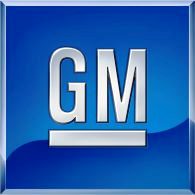In a series of actions clearly designed to improve the maker’s balance sheet in advance of its planned IPO, General Motors has announced it will reduce debt and improve its pension funding position by a total of $11 billion — reducing annual costs by $500 million, in the process.
While GM has yet to provide details of its planned stock offering, company insiders make no secret of the need to present as positive a picture as possible if investors are to come up with the billions needed to begin paying back the federal bailout that pulled the maker out of bankruptcy last year.
Among the most significant steps GM announced today, it will repay $2.8 billion to the retiree medical trust run by the United Auto Workers Union, a move that will result in a $200 million non-cash gain in the fourth quarter of this year.
It will complete a $5 billion “revolver,” or revolving credit line with a syndicate of banks. Though the maker claims it does not plan to tap the line, it provides a back-up source of liquidity, something potentially quite useful considering the uncertain economy.
In addition, the maker said it will:
- Purchase the $2.1 billion of 9 percent Series A Preferred Stock held by the United States Department of the Treasury at a price equal to 102 percent of the $2.1 billion liquidation amount;
- Contribute at least $4 billion in cash and $2 billion in GM common stock to GM’s U.S. hourly and salaried pension plans; and
- Revise the wholesale agreement involving payment for cars shipped from GM factories to its dealers. This move will increase the maker’s accounts receivable balance by an estimated $2 billion.
“Completion of these actions will enable us to reduce net interest cost and preferred dividends by $0.5 billion per year,” said Dan Ammann, GM vice president of finance and treasurer.
Meanwhile, GM is expected to announce its July – September earnings something early next month and analysts are expecting to see the maker deliver its third profitable quarter in a row.
That would be a critical step in preparing for the planned IPO which, industry sources have said, they expect to take place in the latter half of November. (Former U.S. car czar Steve Ratner predicts Nov. 17th date for IPO. Click Here for more.)
Equally uncertain is how GM will price the planned stock offering. If it were to sell off the entire government stake – the Treasury holds a 61% share of the “new” GM – it would be priced somewhere in excess of $130 a share, analysts contend. But in comments earlier this month, former General Motors CEO Ed Whitacre said he expects GM to do a 4-to-1 split and price shares somewhere between $20 to $25 -–roughly double the current going rate for Ford Motor Co. stock.
GM scrambled to distance itself from Whitacre’s remarks, issuing a revised IPO filing with the SEC. (Click Here for more.) His comments, the company said, “were not intended and should not be considered material offerings.
It is expected that a number of foreign buyers, possibly including GM’s joint venture partner, SAIC, will seek to invest in the upcoming IPO.

